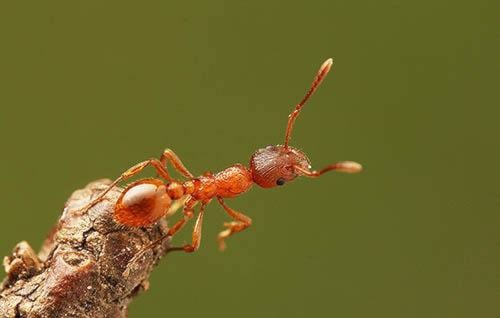If your kids are complaining about being bitten by bugs, and your dog won’t go out into the yard, you might have fire ants.
The invasive species has become established in the Lower Mainland, and two colonies have been reported at properties in Pitt Meadows and Maple Ridge.
Any invasive species can upset an ecosystem, but the swarming European fire ants can essentially make a section of your property effectively off limits.
“They tend to displace people from using the areas where they are established,” explained biologist Dr. Robert Higgins. “The European fire ant is aggressive, and they sting.”
“Someone in Chilliwack told me they know the fire ant season is beginning when their dog moves up onto the deck.”
Higgins, of Thompson Rivers University, is an ant expert who first identified the pest in the Lower Mainland about five years ago. The province’s multi-ministry invasive species working group recruited him to help control the fire ant invasion.
“They’re concerned about invasive species generally, and this is one that is a real pest,” said Higgins.
They have attacked horses, and a section of VanDusen Botanical Gardens in Vancouver had to be closed because of the ants. They can render parks and campgrounds unusable.
Higgins has felt their sting many times. It’s not so intense as a wasp’s, but it’s much worse than a mosquito bite. He compares it more to stinging nettles. The pain builds into a sharp burning. It hurts for an hour or two, then itches. Because the ants swarm, and each can bite multiple times, there is potential for a painful experience with European fire ants.
So far there has been no anaphylactic shock caused by the bites, such as with an allergic reaction to bee stings. But there are cases where an ant bite causes significant swelling, he said.
Their nests can be hard to spot, because they do not have a raised ant hill like other ants – just a pencil-sized opening in the ground.
“They’re tougher to control, because you can’t see a mound – you don’t know they’re there.”
Trying to slow the spread of this significant pest is key work for Higgins. He wants people to contact him if they think they have fire ants. To protect the privacy of homeowners, and encourage reporting he does not reveal their location.
The first step is to get a positive identification, and he offers instructions on how to collect and ship the bugs to him. To a layman, they look like any other ant.
The next step is to follow current best practices. Key is keeping dirt, wood and other materials on site. In almost all instances of new infestation, the ants have arrived in new soil, landscaping materials or with new plants.
He is conducting experiments in the Okanagan to find the best way to eradicate them. So far, pesticides are the only effective weapon.
“We haven’t had any luck with non-pesticide approaches,” he said. “They’re very difficult to knock back.”
Their spread has been slow, because the ants are not doing the mating flights that would step up their invasion dramatically. Higgins is not sure why.
“It could be that they recognize they’re not quite in the right habitat,” he said.
But they are still mating and establishing ever bigger colonies on foot.
“Their numbers will steadily build and spread.”
